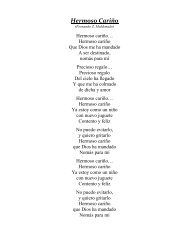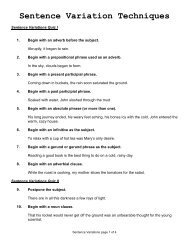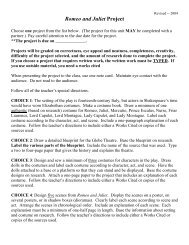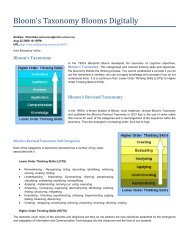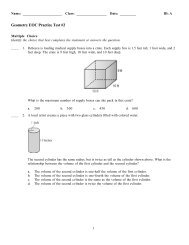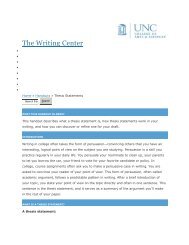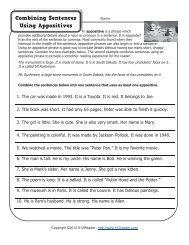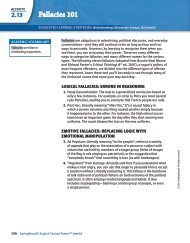Unit 1.pdf - Southwest High School
Unit 1.pdf - Southwest High School
Unit 1.pdf - Southwest High School
You also want an ePaper? Increase the reach of your titles
YUMPU automatically turns print PDFs into web optimized ePapers that Google loves.
Activity 1.20<br />
continued<br />
Understanding the Stranger’s<br />
Perception of a Village<br />
My Notes<br />
at once foolish and dreadful, led someone to make the quite accurate<br />
observation that “the Negro-in-America is a form of insanity which<br />
overtakes white men.”<br />
23 In this long battle, a battle by no means finished, the unforeseeable<br />
effects of which will be felt by many future generations, the white man’s<br />
motive was the protection of his identity; the black man was motivated<br />
by the need to establish an identity. And despite the terrorization which<br />
the Negro in America endured and endures sporadically until today,<br />
despite the cruel and totally inescapable ambivalence of his status in his<br />
country, the battle for his identity has long ago been won. He is not a<br />
visitor to the West, but a citizen there, an American; as American as the<br />
Americans who despise him, the Americans who fear him, the Americans<br />
who love him—the Americans who became less than themselves, or rose<br />
to be greater than themselves by virtue of the fact that the challenge he<br />
represented was inescapable. He is perhaps the only black man in the<br />
world whose relationship to white men is more terrible, more subtle, and<br />
more meaningful than the relationship of bitter possessed to uncertain<br />
possessors. His survival depended, and his development depends, on<br />
his ability to turn his peculiar status in the Western world to his own<br />
advantage and, it may be, to the very great advantage of that world. It<br />
remains for him to fashion out of his experience that which will give<br />
him sustenance, and a voice. The cathedral at Chartres, I have said, says<br />
something to the people of this village which it cannot say to me; but it is<br />
important to understand that this cathedral says something to me which<br />
it cannot say to them. Perhaps they are struck by the power of the spires,<br />
the glory of the windows; but they have known God, after all, longer<br />
than I have known him, and in a different way, and I am terrified by the<br />
slippery bottomless well to be found in the crypt, down which heretics 16<br />
were hurled to death, and by the obscene, inescapable gargoyles jutting<br />
out of the stone and seeming to say that God and the devil can never be<br />
divorced. I doubt that the villagers think of the devil when they face a<br />
cathedral because they have never been identified with the devil. But I<br />
must accept the status which myth, if nothing else, gives me in the West<br />
before I can hope to change the myth.<br />
24 Yet, if the American Negro has arrived at his identity by virtue of<br />
the absoluteness of his estrangement from his past, American white<br />
men still nourish the illusion that there is some means of recovering the<br />
European innocence, of returning to a state in which black men do not<br />
exist. This is one of the greatest errors Americans can make. The identity<br />
they fought so hard to protect has, by virtue of that battle, undergone a<br />
change: Americans are as unlike any other white people in the world as it<br />
is possible to be. I do not think, for example, that it is too much to suggest<br />
that the American vision of the world—which allows so little reality,<br />
© 2011 College Board. All rights reserved.<br />
16<br />
heretics: nonbelievers<br />
78 SpringBoard® English Textual Power Senior English




